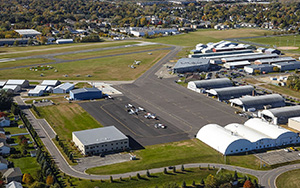
March 10, 2020
The Minnesota Department of Transportation recently published a study of the annual economic impact generated by airports in the state, finding they contribute $18.2 billion annually to the state’s economy.
“The Minnesota Department of Transportation’s report found what NBAA and its members already know – public airports are a significant contributor to employment, tax revenue and spending,” said Kristi Ivey, NBAA’s northern mountain regional representative.
The study focused on the economic impact generated by 126 of the state’s 133 public airports. The economic impact of seven public airports owned by the Metropolitan Airports Commission (MAC), located in the Minneapolis/St. Paul metropolitan area, were also integrated into the report results.
Public airports in Minnesota employ more than 94,000 people, resulting in $4.4 billion in payroll contributions in the state.
The airports are also significant contributors to state and local tax bases, contributing $66.3 million in annual tax revenue. The MAC airports contribute approximately $557 million in annual state and local tax revenue.
The study found approximately 80,000 general aviation aircraft bring an estimated 230,400 general aviation visitors to the 126 study airports annually. These visitors – directly and indirectly – account for over $100 million in annual economic impact.
Four general aviation airports are particularly significant economic contributors. South St. Paul Municipal Airport – Fleming Field (SGS) alone contributes more than $65 million annually. Southwest Minnesota Regional – Marshall/Ryan Field (MML) and Red Wing Regional Airport (RGK) each contribute over $18 million while Mankato Regional Airport – Sohler Field (MKT) contributes almost $25 million annually.
Minnesota is home to eight commercial airports, whose visitors contribute an estimated $164,331,000 annual to the state’s economic activity.
The study also recognized businesses that rely on aviation as a tool, stating, ”The Minnesota Department of Employment and Economic Development indicates that accessibility to transportation infrastructure, such as public airports, is a very important factor to where businesses locate in Minnesota. Many businesses would not be able to compete domestically and in some instances globally without access to a nearby airport.”
Finally, the study presents case studies of public airports’ contributions to medical and healthcare services and agricultural support services and more.
“Local airports are a lifeline to communities,” said Ivey. “Not only are they significant contributors to economic activity, but they support critical medical, agricultural and other services and efficiently connect even rural or remote areas to the rest of the country.”
Read the Minnesota Statewide Airport Economic Impact Study here.
